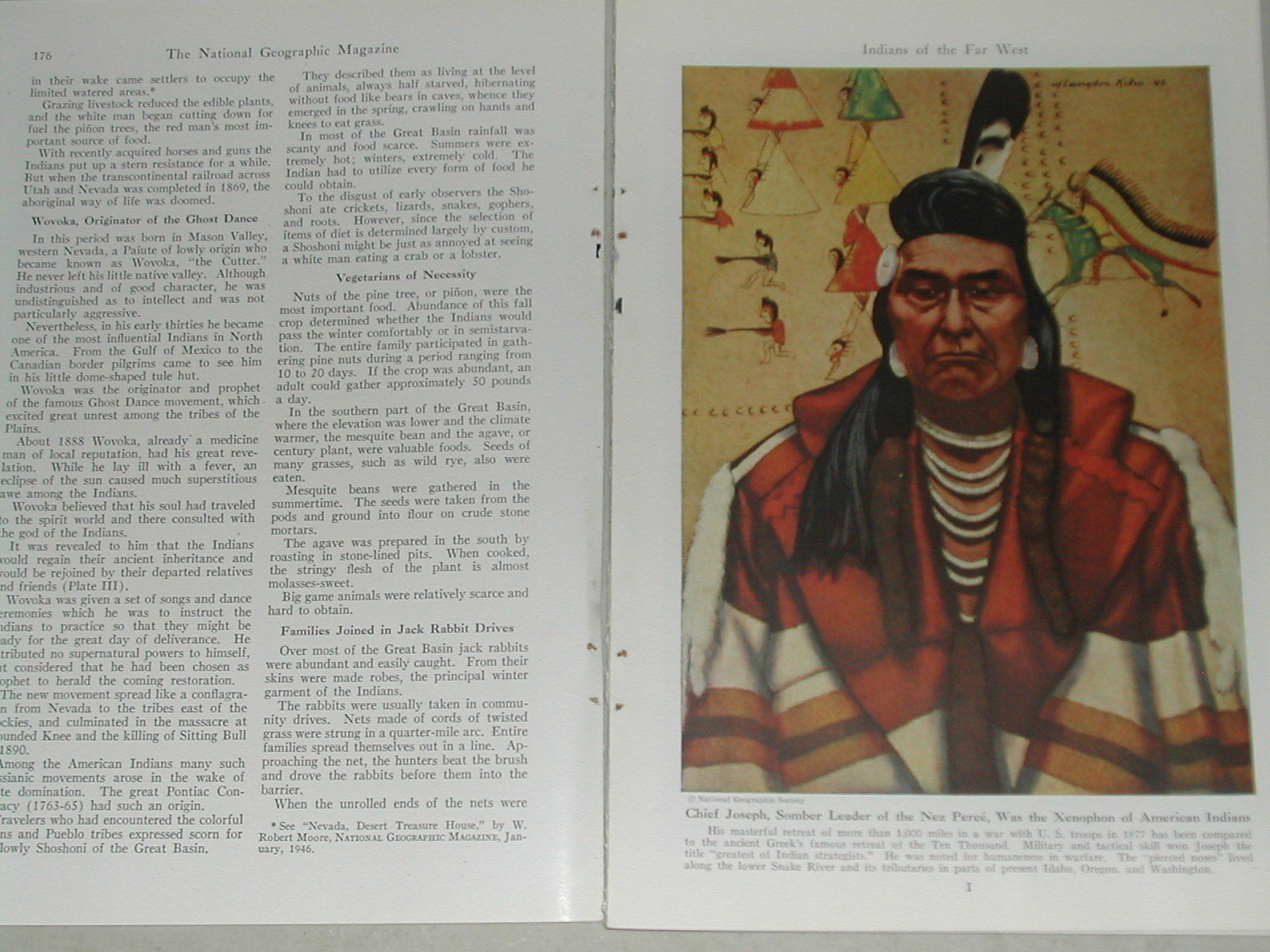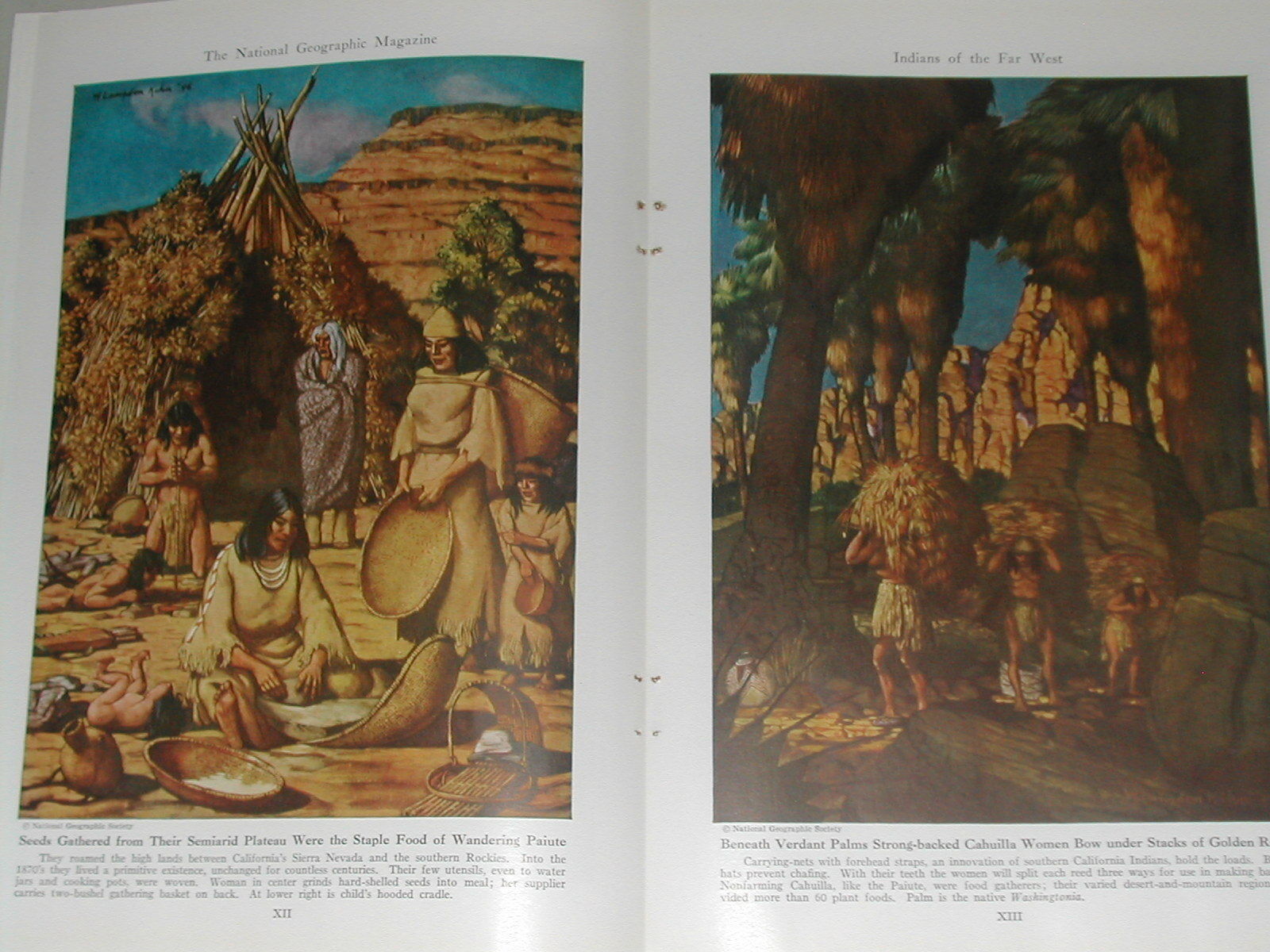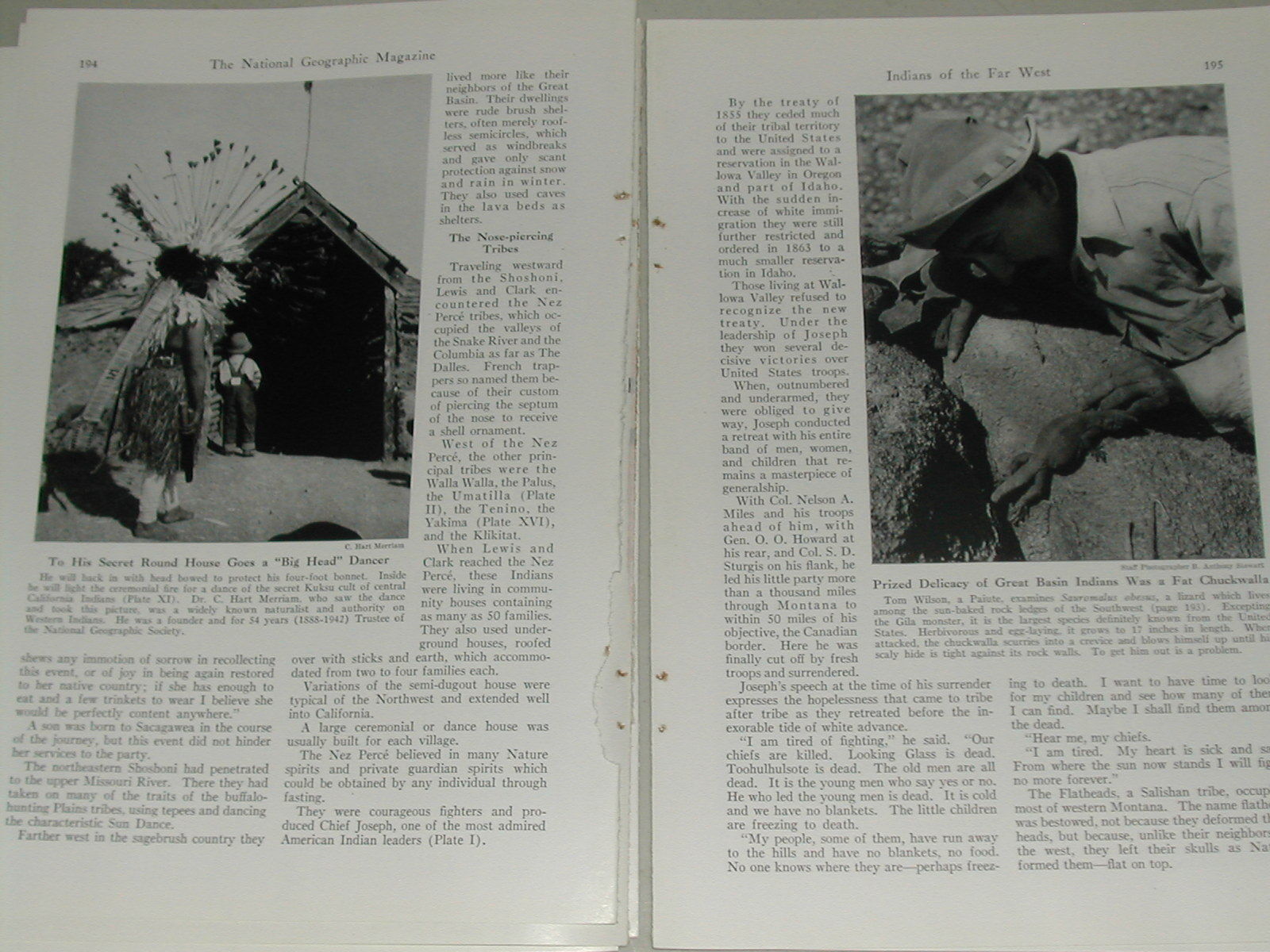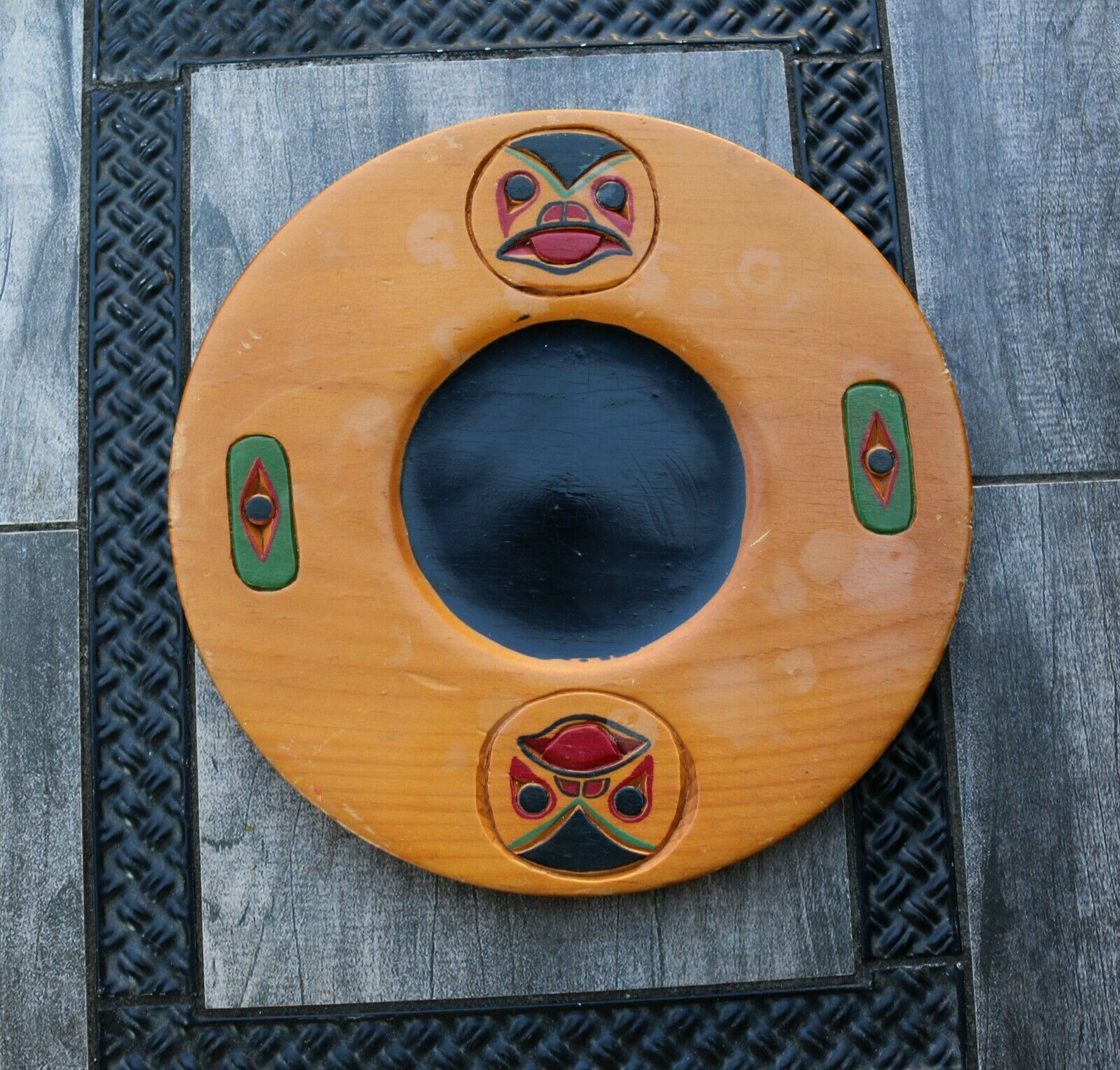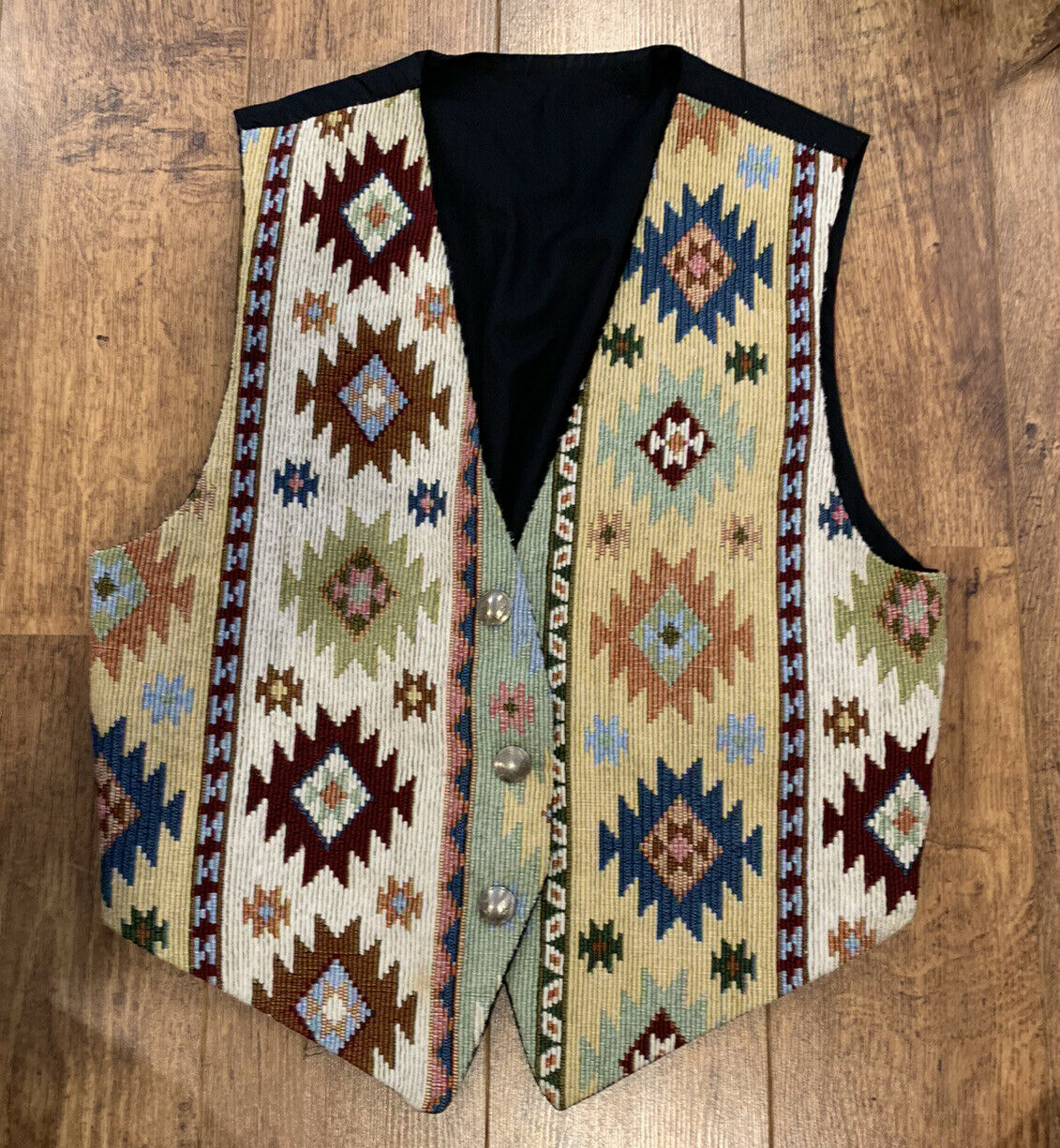-40%
1948 INDIANS OF THE FAR WEST magazine article, Native Americans, color art
$ 5.51
- Description
- Size Guide
Description
Selling is a 1948 magazine article about:Indians of the Far West
Native Americans
Title: Indians of the Far West
Author: Matthew W. Sterling
Paintings by W. Langdon Kihn
Quoting the first page “Between the Wasatch Range of Utah and the foothills of the Sierra Nevada the traveler gazes down from his highflying plane upon what seems to many a panorama of complete desolation-the great American desert.
Mile after mile of saline flats and sagebrush plains unfolds west of Great Salt Lake, where a century ago hundreds of covered-wagon pioneers left their bones and those of their oxen to bleach along torturing trails.
The Great Basin was an implacable enemy to white men then. Even now, though crossed by railroads, airlines, and motor highways, much of it seems unfit for habitation by man or beast.
Yet from this forbidding, inhospitable waste, a generation before the white man came, some 10,000 Indians wrested a living and in their way prospered.
They did this without agriculture; without irrigation; without tools, save crude implements fashioned from sticks and stones; without horses and cattle; without even adequate clothing or shelter from the severe cold of winter or the blazing heat of summer.
Nowhere in human annals can be found a more striking example of man's adapting himself to an unfriendly environment than that furnished by the tribes of the Great Basin.
The Indians of the Far West, living between the Rocky Mountains and the Pacific coast, were in general the most primitive within the present boundaries of the United States. Of all the Far West tribes, those of the Great Basin, which embraces Nevada, part of Utah, and portions of bordering States, were most backward.
Tribes living in the region drained by the Columbia River and its tributaries had better sources of food and therefore reached a slightly higher level.
In the Pacific coast region between the Sierra Nevada-Cascade Range and the ocean abundant natural resources and genial climate made living conditions easy.
Unlike the forest-dotted and low level region east of the Mississippi River, the Far West is a land of tremendous topographic diversity. For instance, in the corner of the Great Basin which extends into southern California, Mount Whitney and Death Valley, highest and lowest points in the United States, are within sight of each other.
The Indians of the Far West were as diversified as the topography. They lived principally on nuts, wild seeds, and roots. They had no buffalo to lead them afar on the chase, as had the eastern tribesmen. Rugged topographical barriers circumscribed their movements.
Great Basin Indians belong almost exclusively to one linguistic stock, the Shoshonean. The principal tribes were the northern Paiute of western Nevada and southeastern Oregon, the Shoshoni of central and eastern Nevada and near-by Utah, the southern Paiute of southern Nevada and adjacent Utah, and the Ute of eastern Utah and western Colorado.
Not until about 1840 did the real period of white immigration into the Far West begin. Starting with the caravans following the Oregon Trail and the Mormon settlements around Great Salt Lake, this white invasion reached its peak in the California gold rush. The most direct routes traversed the heart of the Great Basin.
Tens of thousands of gold seekers crossed the desert during the years of the rush, but their passing had little effect on the Indians. The white men, sticking to the main trails, were concerned only with their goal beyond the Sierras.
The diaries of these pioneers make little mention of the natives save to call them "Diggers," a contemptuous name referring to their root gathering.
Within a few years after the discovery of rich mines in western Nevada prospectors penetrated to every corner of the Basin, and…”
This is the sixth in a series of authoritative articles by Dr. Stirling on the American Indian, illustrated with W. Langdon Kihn's paintings. For many years Mr. Kihn has been acclaimed in America and Europe as a distinguished painter of Indian subjects. He was commissioned by the National Geographic Society to illustrate the comprehensive series on American Indians. To gather data, he traveled to Indian reservations, excavation sites, and over areas populated by Indians long before the white man came, noting costumes, customs, scenic backgrounds, utensils, and jewels of the tribes shown. Thus the paintings combine artistic beauty with a wealth of accurate information.”
7” x 10”, 13 double-sided pages, 5 B&W and 16 color paintings.
These are pages from an actual 1948 magazine. No reprints or copies.
48B2
Please note the flat-rate shipping for my magazine articles. Please see my other auctions and store items for more old articles, advertising pages and non-fiction books.
Click Here To Visit My eBay Store: busybeas books and ads
Thousands of advertisement pages and old articles
Anything I find that looks interesting!
Please see my other auctions for more
goodies, books and magazines.
I’ll combine wins to save on postage.
Thanks For Looking!
Luke 12: 15
Note to
CANADIAN
purchasers:
Since 2007 I've only been charging 5% GST on purchases. Thanks to a recent CRA audit I must change to the full GST/HST charge. Different provinces have different rates, though most are just 5%. My GST/HST number is 84416 2784 RT0001
